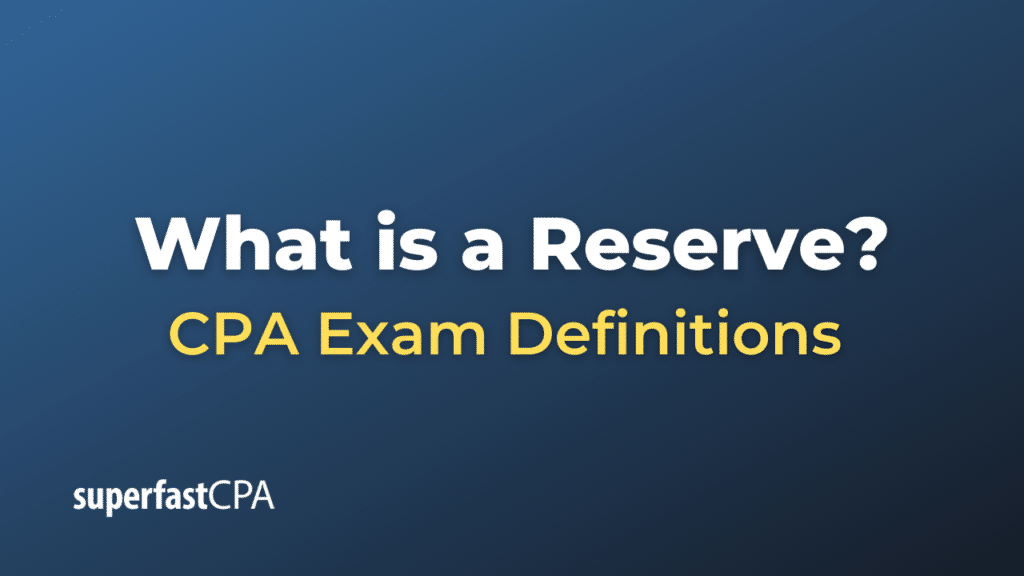Reserve
A reserve, in the context of financial accounting and finance, is a portion of a company’s profits set aside to cover future liabilities, obligations, or unexpected events. Essentially, it’s money earmarked for a specific purpose, ensuring that the company has a safety net for potential future costs. Reserves represent a company’s self-imposed commitment to set aside a part of its earnings for known or potential liabilities.
There are different types of reserves:
- General Reserve: This is a reserve kept without any specific purpose. It’s essentially a safety net for unforeseen contingencies. The money in a general reserve can be used for any corporate purpose.
- Specific Reserve: This type of reserve is set aside for a specific liability or known expense that is expected to arise in the future. Examples include a Dividend Equalization Reserve, Debenture Redemption Reserve, or Contingency Reserve.
- Capital Reserve: Arises from non-operating activities and is usually used for long-term purposes. For instance, a reserve might be created from profits on the sale of a fixed asset.
- Revenue Reserve: Created from a company’s operating profits. It’s money set aside from revenue, hence the name.
- Statutory Reserve: Some reserves are mandated by law. For example, in some jurisdictions, banks are required to hold a certain percentage of their profits in reserve to ensure they remain solvent and can cover potential loan losses.
- Secret Reserves: Not shown in a company’s financial statements. Companies might create secret reserves by understating assets or overstating liabilities. While it might give a company some flexibility, it goes against the principle of providing clear and transparent financial information.
The act of setting aside a portion of profits as reserves is a prudent financial practice. It helps companies ensure they have funds available for unexpected events, future obligations, or opportunities. Proper management of reserves is crucial for maintaining financial stability and building trust with investors, creditors, and other stakeholders.
Example of a Reserve
Let’s use a hypothetical company, OceanTech Ltd., to illustrate the concept of reserves:
OceanTech Ltd. is a company that manufactures underwater exploration equipment. Over the past year, they’ve had a profitable run and are now considering how to manage their profits wisely.
- General Reserve:
- OceanTech decides to allocate $100,000 to a general reserve to provide a safety net for any unforeseen financial contingencies.
- Specific Reserve:
- Equipment Replacement Reserve: OceanTech knows that some of their manufacturing machines will need replacement in 3 years. They set aside $50,000 for this specific purpose.
- warranty Reserve: OceanTech’s products come with a warranty. They estimate that warranty repairs and replacements will cost about $30,000 for products sold this year. Thus, they allocate this amount to a Warranty Reserve.
- Capital Reserve:
- Revenue Reserve:
- After paying dividends to shareholders, OceanTech opts to keep $80,000 of its operating profits in a revenue reserve for future business expansion.
- Statutory Reserve:
At the end of the year, when OceanTech publishes its financial statements:
- The balance sheet will show a total of reserves amounting to $320,000 (sum of all the above).
- Notes accompanying the financial statements will provide details of each reserve, ensuring transparency for shareholders and other stakeholders.
By setting aside these reserves, OceanTech is not only complying with legal requirements but also ensuring that funds are available for specific future needs, potential liabilities, and unforeseen circumstances. This financial prudence enhances the company’s credibility and financial stability.













